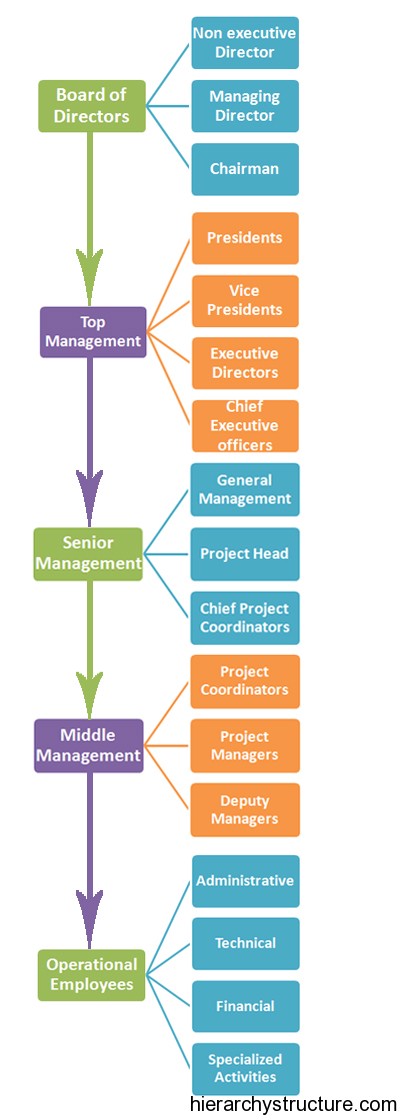Business employee hierarchy is the pyramidal type arrangement of the organizational employees, departments and functions. It is the process of analyzing, dividing and arranging the work or activities into manageable portions for individuals, sections and departments. In such arrangements, the activities are grouped around functions such as production, finance, marketing and operations.
Such kind of organizational pyramid gives us a vertical hierarchy and the delegation of authority based on the span of control creates multiple levels of employees. Each level in the hierarchy becomes an integral part of the chain of command and acts as the channel for transmission of authority to the succeeding lower level of the Business management.
A hierarchical structure of an organization predefines the role of employees within the organization setup and also pre-sets the nature of the relationship that employees will share with each other. Hierarchical structures in organizations narrow down as we move in the upward direction and showcase centralization in the whole setup. The general organization hierarchies observe the following business employee hierarchy:

Board of Directors
The first level in the hierarchy is acquired by the trustees or the board of directors from whom they select a chairman with a simple vote of majority. These are the supreme authority of the organization that are required to direct and are responsible for the governance of the organization. The members at this level of the organization hierarchy help to develop new perspectives for the organization and provide their guidance at the required places.
Top management
This level includes presidents, vice presidents, executive directors and chief executive officers. The professionals at this level are the most important strategists of the organization and are responsible for all the aspects right from the formulation of policies to the review of management practices. These professionals act as architects of the organizational purpose and behave as motivators & mentors. These act as the link between the company and the Board of Directors, and are responsible for managing the external environments & relationships.
Senior management
This level is comprised of the designations like general management, Project head, and chief project coordinators. The professionals at this level are responsible for certain areas ore Business departments of the organizations. These are more focused on their product line or the sub – objective of the organization on which they are working. These professionals are more seen in the implementation and the supervision role.
Middle management
Middle managers work on implementing the strategies and plans, but are not involved in the formulation phase but they actively participate in the execution of the strategies and the business functions. This level includes project coordinators, managers and deputy managers.
Operational Employees
The professional at this level are generally hired for a specialized expertise and for performing the basic tasks in the organization. These employees perform administrative, technical, financial or other specialized activities which are the building blocks of major company’s function and which are required to be performed on the day today basis in the organization.
